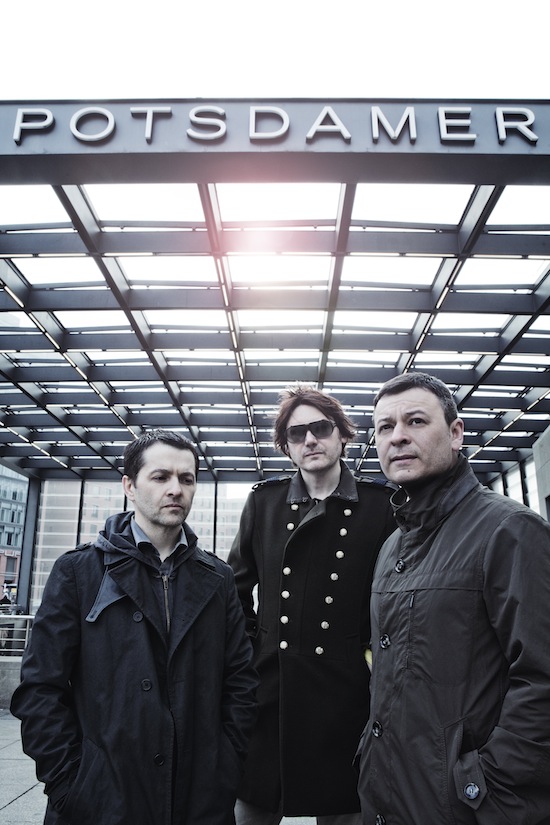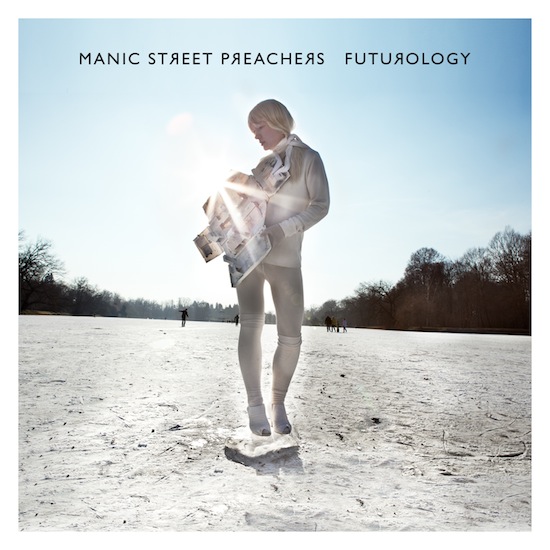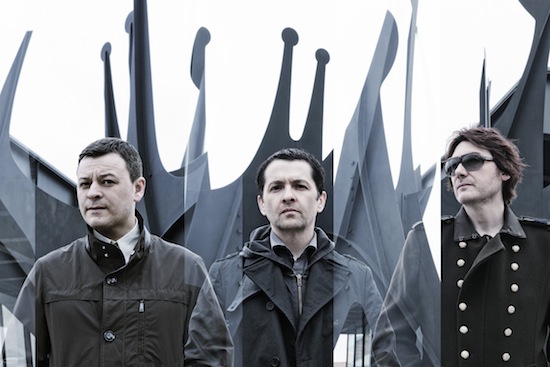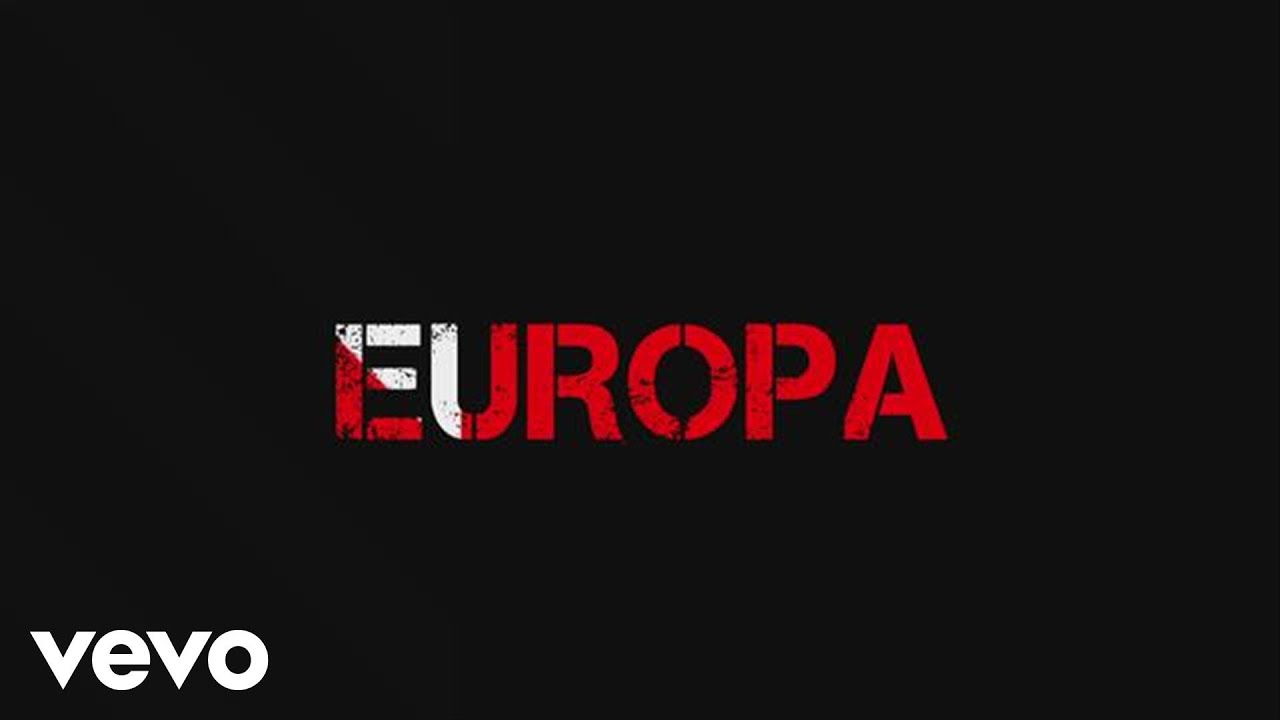On the December 3, 1913, two men in angular, brightly coloured costumes burst onto the tiny stage of St. Petersburg’s Luna Park Theatre and announced the end of time. This was Victory Over The Sun, the only opera to be conceived and executed by the Russian futurists; the most ambitious and spectacular event of their brief existence.
The story saw a small group of adventurers capture and kill the sun, bringing about an end to time itself; the very structure of night and day exploded. Hampered by a barely-rehearsed and self-consciously stilted style of delivery, with quarter-tonal music performed on a battered old, out-of-tune piano, it was also an unmitigated failure.
But its themes and ideas would continue to haunt the participants such that two years later, they would plan a revival. This time, art director Kazimir Malevich had a radical idea for his set design. In place of any attempt at naturalistic representation, the backdrop for the final act would consist of a single, vast black square. This would be the Tenth Land of the Future, a world beyond time after the death of the sun.
This was far from the end of Malevich’s now-notorious Black Square. Later that same year, in December 1915 at the Dobychina Art Bureau of the city now-called Petrograd, Malevich spearheaded an exhibition called 0.10 The Last Futurist Exhibition. In the corner of the room, high up, almost touching the cornice, was the painter’s obsidian quadrate, looming at an angle over the rest of the exhibits. Now it was the symbol of Suprematism, an aesthetic theory that declared the objective world to be "meaningless", that the art of the past had "become nothing more than a conglomeration of countless ‘things’", and from now on the only "significant thing is feeling".
For Nicky Wire, who recalls being "completely baffled" upon first seeing the Black Square of Suprematism as an art O-level student, Malevich’s canvas stands now for "punk. This is it. I am stripping the world of everything you have seen before and this is the reality of now." With the Manics’ former lyricist and rhythm guitarist Richey Edwards, whose disappearance is approaching its twenty-year anniversary, Wire tells me he would often talk "about the idea of Year Zero". In the lyrics to the song ‘Black Square’ from the new Manic Street Preachers album Futurology, Wire quotes Malevich, "Free yourself from the tyranny of objects" and asks, "Let us wipe the slate clean, let us dig our own graves."
According to John Gray’s recent The Immortalization Commission (the book which Wire credits for bringing Malevich back to his attention), after the death of Lenin in 1924, the black square came to mean something else. It was the inspiration for the Soviet premier’s cuboid tomb, intended to be a ‘fourth dimension’ beyond the possibility of death itself. "Lenin’s death is not death," wrote Malevich, "that he is alive and eternal, is symbolized in a new object, taking as its form the cube."
For nearly thirty years now, the Manic Street Preachers have been as much a portal as a band, a gateway to a whole universe of art and ideas. "We saw ourselves as transistors, like Stockhausen said," Wire told me, "we’re just transistors to another life. Because all those things that we picked up, mostly from watching the telly or listening to music, we were trying to get across how enriching that was."
From the Jenny Saville print on the cover of The Holy Bible to quotes from Guy Debord on the sleeve of ‘Stay Beautiful’, the group wove such a fascinating skein of references around them that I have sometimes wished the music itself would disappear beneath it, that I might gaze upon the moon and not the pointing finger. Curiously, during the half hour or so I spent talking to Nicky Wire in a glass-walled cubicle in the Sony offices in Kensington, I sometimes got the feeling I was not the only person in the room who felt this way.
Wire seems tired, I wrote in my notebook on the tube home. He sips gingerly at a cappuccino in a cardboard cup. Removes, from time to time, his otherwise ubiquitous sunglasses to pinch at the bridge of his nose. The night before the band had played one song at an awards show. It was the end of the night. Late. An invited crowd bayed on free drinks and self-congratulation. Apparently two songs were in the offing but Wire was already stalking off the stage before the closing chords of the first had died out. As we spoke, bandmates Sean Moore and James Dean Bradfield were still in bed, Wire tells me, at a quarter past one in the afternoon.
But there’s more than mere physical exhaustion, which might be no more than an occupational hazard to a career rock star. "I’ve just fucking exhausted all my old records so much," he says at one point, and I sense that the vinyl collection may be synecdochic for his feelings towards music in general. "I feel more inspired by other avenues…" Only when we start talking about art does he lean forward, take off his aviator shades, and seem fully engaged in the conversation.
In 1942, Edvard Munch was isolated, anguished, and afraid, approaching eighty years old. The Nazis, who had invaded Norway two years previously, hated him as a degenerate artist. His fellow countrymen hated him, due to his long association with the German art scene, on suspicion of being a Nazi sympathiser.
For more than half a century he had explored a radically new style of painting, scoring and gouging at the oils to lay bare the fierce emotion behind the act of painting, or rubbing it raw to expose the grain of the canvas itself, anything to bring out the materiality of the painted surface, to express the feeling and not the retinal image. At the same time, he had been sick, tortured, agoraphobic.
Now he lived alone in a farmhouse at Ekely, to the west of Oslo. There he lived spartanly and grew potatoes, convinced that his home and his work would be confiscated at any moment, and painted copious self-portraits. In each of these paintings he seemed to be rehearsing the moment of his own death. He told friends that he did not want to die in his sleep, that he wanted to be awake to experience the moment itself.
One of these self-portraits, Between The Clock And The Bed, evidently caught the attention of Nicky Wire because he named one of the songs on the new Manic Street Preachers album after it. He had first seen the image as a child, in one of those collectible series of magazines, The Lives Of The Great Artists or suchlike, that were so peculiarly popular in late twentieth century Britain, only to abruptly disappear with the rise of the internet.
"It was the title that grabbed me," he admits, of rediscovering the picture a year or so ago in one of the many art books that litter the coffee table of his South Wales home. The painting shows Munch haggard and hollow-eyed, his fingers tense at his sides, poised between the twin coffins – the one upright, the other horizontal – of the title. Behind him the walls are covered in the paintings he was so worried would be confiscated by the occupying powers. "It’s a really frightening painting," Wire tells me, it "disturbs me a bit."
"Between the clock and the bed," the song’s chorus goes, over gated drums and walking bass, "there’s only space and hell." What Wire calls this "in-between" and the passage from one to another is crucial here. It’s a duet between Bradfield and Green Gartside of Scritti Politti, one of the few songwriters to be as adventurous in bringing different lyrical themes into mainstream British pop as the Manics themselves.
Wire credits Gartside’s Top Of The Pops appearances in the 1980s for displaying "the greatest hair I have ever seen – except for David Sylvian maybe." He compares the leap from the "poverty rock" of Scritti’s ‘Skank Bloc Bologna’ to the TOTP-friendly ‘Wood Beez’ with the Manics’ own transition from ‘Revol’ to ‘Design for Life’ in about the same number of years. So what Wire calls Munch’s "journey into death" becomes a travelogue of a different sort. "Still building the bypass in my head," Gartside sings in the second verse, in one of the many references to roads scattered throughout the record.
Like Munch himself, the artists associated with die Brücke movement were transitional figures in the history of art, between romanticism and modernism. Though they claimed to be entirely uninfluenced by any of their contemporaries, the mark of Munch’s work upon the likes of Fritz Bleyl, Erich Heckel, Karl Schmidt-Rottluff, and especially Ernst Ludwig Kirchner has always been considered self-evident by critics. In 1906, these artists signed a manifesto pledge to build a bridge to the future. "We call upon all youth to unite," they wrote. "And being youth, the bearers of the future, we want to wrest from the comfortably established older generation freedom to live and move."
Wire credits the group with inspiring what might be considered one of the master-tropes of this record, "the idea of feeling over seeing." They leave a trace equally on one of the album’s most anthemic tunes, ‘Walk Me To The Bridge’. About four years ago, the Manics were on tour in Scandinavia, and Wire was "fucking exhausted, wanting to leave the band." Then they crossed the Øresundsbron, an eight kilometre bridge followed by a four kilometre tunnel connecting the Swedish city of Malmö to the Danish capital, Copenhagen. The journey, Wire tells me, "just lifted me".
Designed by the architect Georg Rotne and opened officially in July of 2000, the Øresundsbron is the longest cable-stayed bridge in the world. I can well understand Wire’s feeling of transformation on that crossing because every time I have been on that bridge I felt like I was in a science fiction film, entering some portal into another dimension. "I just felt like I was hovering above myself, driving across the bridge," Wire told me. By the time he got to the other side his mood had completely changed to one of "Yeah! Fuck it! Let’s fucking stick it to them!"
But for longstanding fans of the group, recalling the discovery of their former guitarist’s Vauxhall Cavalier at the Severn View service station in February 1995, the title of the song may stir up darker memories. "I know people are going to think this is about Richey," Wire says, "and really Richey’s in all our lyrics. But it’s not specifically about Richey," he insists. "It’s much more about that out-of-body experience where you leave, you get on a bridge, and you arrive somewhere else and your mindset just completely changes." This is the more prevalent narrative of the whole album: not just the power of art – in this case architecture – to change your perspective, but the singularity of places, the secrets contained in every town, every city and the way they can inspire you.
One of die Brücke’s most celebrated contemporary descendants, Anselm Kiefer is an artist who has always been alive to the specificity of place and the enduring presence of history. In 1993, he bought an old silk factory in Barjac in the South of France and began converting it into what he called a "palace of memory". He built greenhouses and filled them with sculptures, dug a vast underground tunnel complex, erected concrete amphitheatres. "Memory is my only homeland," he told Le Monde – a line quoted to me by Nicky Wire, who told me no matter how Welsh he may feel, he considers himself ultimately "a citizen not of the world, but of places that have something to inspire you. And they’re fucking everywhere."
We spoke about the bullet holes still evident on the wall of the Westgate Hotel in Newport, mute testimony to the Chartist uprising of 1839 when several thousand working men marched on the town square in the aftermath of Parliament’s rejection of the People’s Charter. And about John Hughes, the engineer who went from Newport’s Uskside Foundry to found a city in the Donets Basin of the Russian Empire in 1869. Initially called Hughesovka, after its founder, the city became an industrial centre thanks to the steel plants and coal mines Hughes built there and many Welsh migrants and their families moved there to work.
There’s something oddly utopian about this story for Wire, even if "obviously it all turns to shit in the end". In 1961, Hughesovka was renamed Donetsk and scarcely three weeks before we sat down at the Sony offices, the city declared itself an independent republic after a group of neo-Nazi activists seized control of the government buildings.
Newport, the city Wire calls home, is a place "caught in-between", he tells me. "In-between the capital and the ‘other’ country" go the lyrics in ‘The View From Stowhill’, a song which hymns the town’s "silent-ghostly-still" particularity. "It feels like a forgotten town," he tells me. Forgotten, that is, by what Wire calls New Labour’s "obsessive big metropolitan nature." But to be a place in-between is also to be a place in which things meet and intermingle. If the Severn Bridge, seventeen miles to the east, is a haunted place for many, it is also an important link between the valleys of South Wales and the west of England. Likewise, the Øresund bridge is not just about an inspirational work of engineering, but about European unification, physically linking Sweden to the main western European continental land mass for the first time since the ice age.
Throughout the summer of 1974, a five year-old Nicholas Jones (the future Mr. Wire) was glued to the TV, "obsessed", as he told me, with the World Cup. But on the June 22, as a late goal by Jürgen Sparwasser saw the DDR beat the Bundesrepublik one-nil, little Nicky could only wonder, "Why are there two different Germanys?" Fifteen years later, as the Berlin Wall came crumbling down, Wire’s first thought was, "Fuck me, Germany are going be even better at football."
Growing up, he recalls the Eastern Bloc being "portrayed as sort of dark and foreboding." But many of the post punk and new pop artists from the West who stand out as the biggest influences on Futurology exhibited a strange kind of fascination with the East. "For the mythology of post punk and new romantic, three cities only really mattered," writes Agata Pyzik in her new book Poor But Sexy: Culture Clashes In Europe East And West, "the Berlin-Warszawa-Moscow express used to map the phantasmagorical geography of the Eastern Europe of the mind, made in equal part of ashes and brocade, death and glamour."
Pyzik’s book charts the rise of this "Soviet-mania" from David Bowie’ arrival at Hansa Tonstudio in a West Berlin "still pockmarked with bullet holes," via Joy Division’s early incarnation as Warsaw, The Human League’s Dignity of Human Labour (with Yuri Gagarin on the sleeve), to the workerist imagery of Depeche Mode’s Construction Time Again. For artists in the 70s and 80s, it was often precisely the "dark and foreboding" image of the east – the "European grey" Ultravox sing of in ‘Hiroshima Mon Amour’ – that attracted them. But as Pyzik argues, for many at the time, this proto-Ostalgie was just as much a nostalgia for the post-war settlement in the West that was then being torn down by the Thatcher administration.

Like Bowie’s "Heroes" and Depeche Mode’s ,i>Construction Time Again, the new Manics album was recorded at Berlin’s Hansa studios and, just as the music ripples with "eighties perfection" and "post punk disco rock", it is also threaded with references to Moscow, Berlin, the Ukraine; to "European roads" and "European dreams". Berlin, Wire tells me, is a city "we’ve spent a lot of time [in] over the years. Outside of the band I go there, I dragged my kids on holiday there on the day of the jubilee two years ago just to fucking avoid that…" It’s clear that, apart from anything else, his fascination with Europe is a way of expressing a growing frustration with England. He gets viscerally angry talking about his "disenchantment with Ed Milliband" and Labour’s cutting ties with the unions. "Does he think that’s a vote-winner, beyond some fucking terrible restaurants in London?"
When the Berlin wall first fell, the band had released one self-financed single. By the time of the final collapse of the USSR, they were signed to a major label and on the verge of releasing what would become a gold-selling, award-winning debut album. Wire recalls, only a short while later, playing a show in Chemnitz, a city that up until 1990 had been Karl-Marx-Stadt and was still, he says, "wrestling with its own identity". The crowd, he remembers, were "really fucking edgy. It was a real eye-opener." As they toured more and more throughout the decade, they would bear witness to the change. "I remember the difference between Prague in ’91 and then going back in ’94, ’95 was just unbelievable. The sense of relief of people. I remember that hitting me. The difference in the psyche."
Later, in 2001, they would travel to Cuba to play a show and meet the president. Upon returning, they had "a lot of trouble, going to a lot of places that had just got rid of communism. They were like, you’re fucking taking the piss, shaking hands with Castro. We’ve just had the worst period of our lives." It’s an experience that inspired the song ‘The Next Jet to Leave Moscow’, "So you played in Cuba did you like it brother?" sings Bradfield, "I bet you felt proud you silly little fucker."
While the group are clearly "well aware of the pitfalls", there remains a hint of Ostalgie about Futurology, even if only for "an amazing period of artistic discourse". There was, Wire tells me, "something comforting, in a strange way. That idea that there were just two gigantic blocs facing each other off." And with the collapse of it all, "black and white has been replaced by grey and everything has just merged in the middle…" But then he corrects himself: "The middle-right. It leaves you feeling terribly deflated."
So while the present changed in those years following the fall of the Wall, so too did the future. In 1994, Jean Baudrillard spoke caustically of "these societies that no longer expect anything from a future succession of things and have less and less faith in history, societies that bury themselves in the backdrop of their futurological technologies". The Futurist imagination of Malevich and his co-conspirators had finally been buried beneath the technocratic futurology of economists and weapons manufacturers. "I think the future now seems purely technological," Wire told me, "whereas in the past it seemed tactile, aesthetic, philosophical."
So while the new Manic Street Preachers album may be, as he says, "one of our most positive records ever", it’s also an album shot through with a certain kind of melancholia, with mourning for a time when other futures remained available. "The future," wrote Jacques Derrida, "can only be for ghosts." Or as Nicky Wire says: "The future does seem to rely on the past for inspiration."
Futurology is out on July 7





